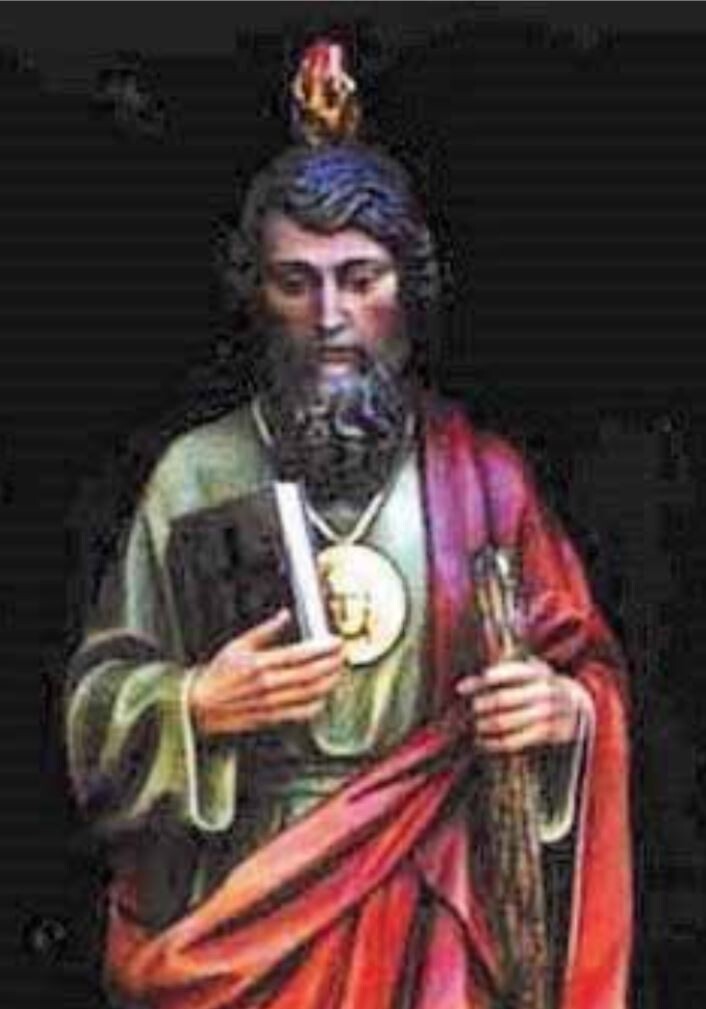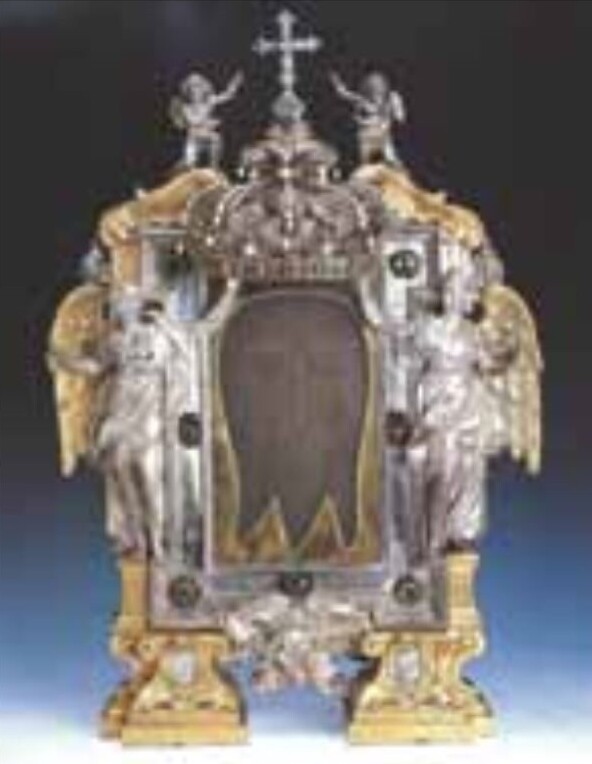Statues and paintings of St. Jude and most other saints show them holding an object or an instrument whose purpose is to tell us who the saint is and what he or she did to gain their place in heaven. These objects identify them to the faithful who are praying to the saint for an answer to their prayers or novena intentions.
Almost all the apostles and saints can be identified in this way. Naturally, the better-known saints are more easily identified: St. Peter holding the keys to the Kingdom; St. Sebastian full of arrows; St. Lucy with her eyes on a plate; the giant St. Christopher with the Christ Child on his shoulders.
However, when it comes to our patron, St. Jude, the images are more complicated. As is clear in the image of him here, he is usually shown with the attributes that relate to his life and death, as well as a few objects that have accrued to him during the early centuries of Christianity, such as the legend of St. Jude and the Mandylion of Edessa, and the symbol of the Holy Spirit’s descent upon the apostles at Pentecost.
According to St. Luke’s Gospel, Jude was the brother of the apostle St. James the Lesser. Both were related to Jesus as distant cousins. St. Jude has already been credited as the author of the brief Epistle of St. Jude found in the New Testament (“Content earnestly for the faith once delivered to the saints”). For that reason he is shown carrying the Epistle.
Tradition has it that Jude and his fellow apostle and brother, St. Simon, carried the Gospel message to Persia, where they were not well received, and there met a martyr’s death. St. Jude was clubbed to death and Simon was sawn in half. Most commonly, the iconography of St. Jude shows him wearing a medal or strip of cloth on his chest with the face of Christ imprinted on it.
This is the most enigmatic attribute of St. Jude. This image refers to the ancient legend of Abgar, King of Edessa (in present-day Turkey). Abgar was stricken with a terminal illness — possible leprosy. He heard of a wonder-worker in Palestine: Jesus the Christ. In desperation, he sent a servant named Anania, asking Jesus to heal him. Jesus responded that, while He could not personally come, He would send one of His apostles, namely, St. Jude, to console him. Jesus pressed cloth to His face and left an imprint of Himself on the fabric, which since then is known as the Mandylion of Edessa.
The King’s servant Anania is also said to have painted a portrait of Jesus and this, together with the Mandylion, cured Abgar, who accorded the image a place of honor in his palace chapel.
It was so highly venerated there that after the Byzantine Emperor transferred it to the Royal Palace in Constantinopole in 944, the Mandylion was always carried into battle to assure victory for the Emperor’s army and navy. It remained in Constantinopole until the invasion of the Venetians in 1204 when the Mandylion was transferred to the West… and history loses its clarity.
So it is that the image of St. Jude Thaddeus is ever associated with the legend of King Agbar. And by association, the healing of difficult and impossible cases of the faithful. The healing of Abgar from a purely human point of view is impossible, but with faith in Christ and His servant Jude, all things are possible.
With Christ and St. Jude,
Fr. Allan Duston, OP

